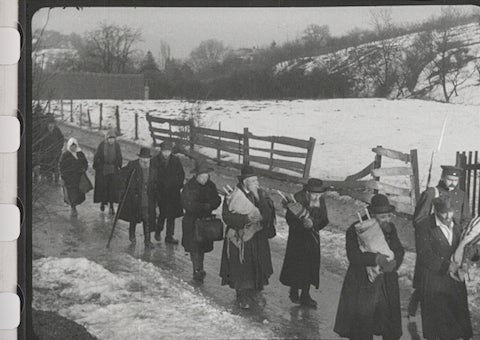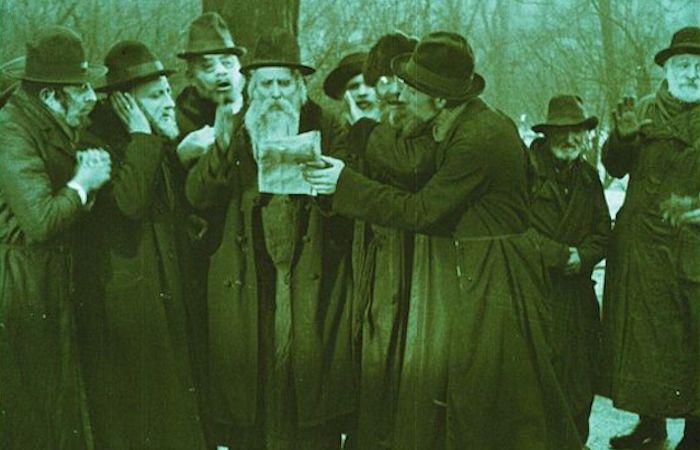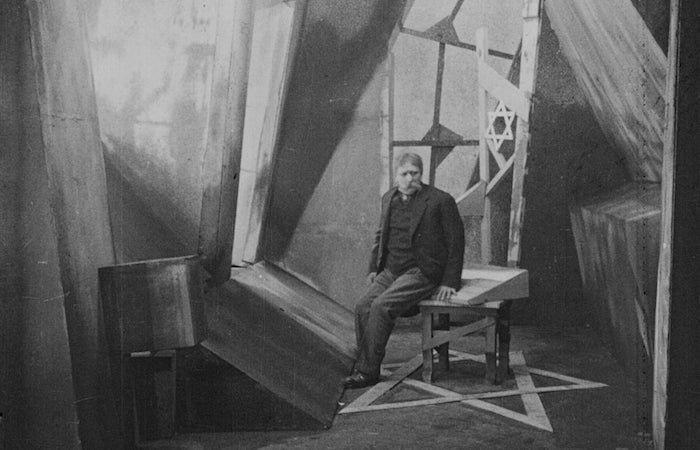
The City Without Jews (1924)
On a recent Sunday, the Wilshire Boulevard Temple—remembered as the storied synagogue of Louis B. Mayer and other Hollywood moguls—screened a new digital restoration of Die Stadt ohne Juden [The City Without Jews] (1924, Hans Karl Breslauer). This Austrian film, based on a novel by Hugo Bettauer, was considered lost for decades. I first came across Bettauer’s name more than 20 years ago, when I oversaw the restoration of The Joyless Street (1925), another socially critical film based on another novel by Bettauer, so I was eager to see the new restoration. The Wilshire screening was organized by Linda Kent, who had been contacted by Nikolaus Wostry, the film’s preservationist. After the screening, Steven Ross and Wolf Gruner, both professors of History at USC, led a spirited discussion.
Hugo Bettauer, who had become an American citizen in the late 1890s, worked as a journalist in Vienna during World War I, and in 1920 started writing essentially potboiler novels, publishing City Without Jews in 1922 and The Joyless Street in 1924. While the first novel dealt with anti-Semitism satirically, becoming a best-seller despite its negligible literary quality, the latter discussed the impoverishment of the middle classes, due to runaway inflation. Both film versions saw the root of social problems in the inequities of the class system. Not surprisingly, Alfred Rosenberg, chief ideologue for the Nazis in Berlin, viciously attacked Bettauer as a purveyor of pornography. In March 1925, Bettauer was gunned down in the street by a young Nazi.

The Vienna premiere of Die Stadt ohne Juden in July 1924 was a disaster, because the prints sent from the lab were far too dark (the film may have been a victim of sabotage), but other press reports note the film did brisk business. When the film opened at another theater in Vienna in October, Nazi sympathizers wearing Swastikas threw stink bombs into the packed house. Further rightwing protests greeted the film when it premiered in Berlin in 1926, but the sophisticated Berlin film critics also complained about the film’s lack of aesthetic quality. The film played in New York in 1928 after being briefly banned by the New York State censorship authorities, and was last seen in Amsterdam in 1933 as part of an anti-Nazi campaign, before disappearing completely. The new restoration had its world premiere at the San Francisco Jewish Film Festival in July 2018 and was presented to the President of Austria, Alexander Van der Bellen, at a special screening in the Chancellery in Vienna on October 15.
This was not the first time a print had been discovered, although much of the press has downplayed that fact. In 1991, the Eye Institute in Amsterdam discovered a nitrate print in their vaults with Dutch intertitles. That print was restored analog by Filmarchiv Austria, but it turned out to be missing many crucial scenes, e.g. Jews being attacked on the street by anti-Semites, as well as the head titles, and the ending. In 2015, an immaculate original nitrate print was discovered in a Paris flea market. Filmarchiv Austria staged a crowd-sourcing campaign which raised $107,000 for a new restoration that would marry the surviving elements. The image quality of the new material is excellent.

While the film obviously takes place in Vienna, given the many location shots, it is supposedly set in the mythical Republic of Utopia. The opening scenes in the Parliament present a debate during which the anti-Semitic party blames the Jews for the country’s economic woes. They then vote to expel the entire Jewish population. The effects of the expulsion are visualized through two “mixed” couples in an upstairs-downstairs construction: the Aryan daughter of a Deputy is married to a Jewish man, while the cook in the household has a Jewish boyfriend. The action results in a complete collapse of the economy and cultural life of the country, since it was especially the Jewish population that supported theatre and the arts. Eventually, in a somewhat over-determined happy ending, the Parliament votes to reinstate Jewish citizens, after the young husband makes sure one of the worst anti-Semites gets too drunk to vote.
While it is tempting to see this narrative as prescient of what would happen in Germany 10 years later, that would be over-reaching. In fact, Jewish expulsions were common during the Middle Ages in Germany and Italy, and daily threat in the Pale of Settlement. General Ulysses S. Grant even ordered the expulsion of American Jews from Mississippi, Kentucky and Tennessee in 1862! Especially heartbreaking are the scenes of Orthodox rabbis fleeing the city with Torah rolls, and the street beatings. Ironically, the figures for identification are completely assimilated Jews without any signs of traditional dress, possibly to allow non-Jews to sympathize. Before a print was found, the film was thought to be expressionistic, because of surviving images of an anti-Semitic Deputy locked in an insane asylum that remakes Caligari’s cell. In fact, this expressionist scene is an outlier, the remaining footage being presented realistically. Another weakness is that the film works mainly with stereotypes, while the script lacks narrative logic. Nevertheless, this film is an important historical document.
< Back to the Archival Spaces blog






 Mobile Navigation
Mobile Navigation

